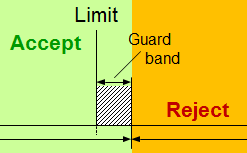Interlaboratory comparisons other than proficiency testing
Content
 The international standard ISO/IEC 17025 requires a laboratory to participate in proficiency testing (PT) and/or to participate in interlaboratory comparisons (ILCs) other than PT. However, the Standard gives no guidance as to what these other ILCs might be, or indeed how they might compare in relation to PT.
The international standard ISO/IEC 17025 requires a laboratory to participate in proficiency testing (PT) and/or to participate in interlaboratory comparisons (ILCs) other than PT. However, the Standard gives no guidance as to what these other ILCs might be, or indeed how they might compare in relation to PT.
This leaflet, prepared by the EEE-PT Working Group, outlines other types of interlaboratory comparison and points out some of the limitations as compared to PT.
Availability
- Download English version (551 kB) (Published 2024-04-11)1,2
Translation
Please consult the PT Working Group Chair if you would like to prepare a translation in your own language.
Notes
1. Publication dates are dates of website publication for the current version.
2. First published 2024-04-10. Current file version (Ed.1a) includes editorial correction to date of publication.




 This information leaflet is intended for laboratories perfoming chemical analyses. It has been prepared by the Eurachem Measurement Uncertainty and Tracability Working Group (see
This information leaflet is intended for laboratories perfoming chemical analyses. It has been prepared by the Eurachem Measurement Uncertainty and Tracability Working Group (see